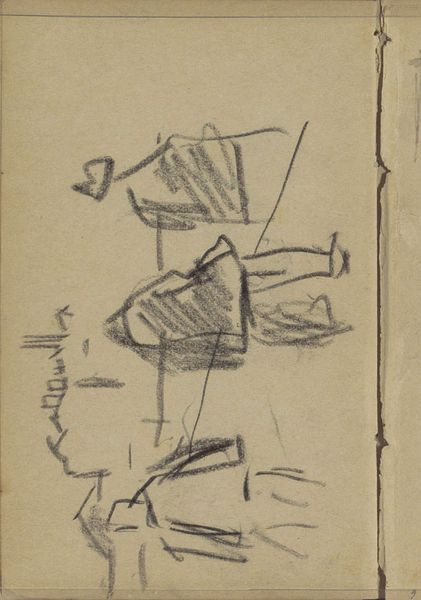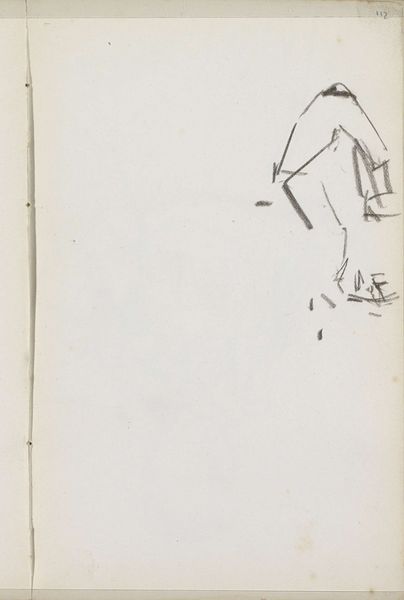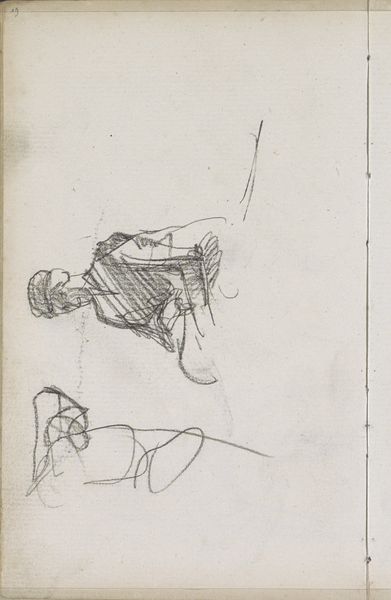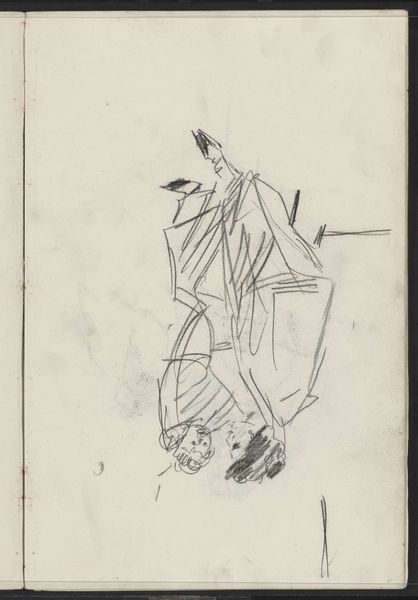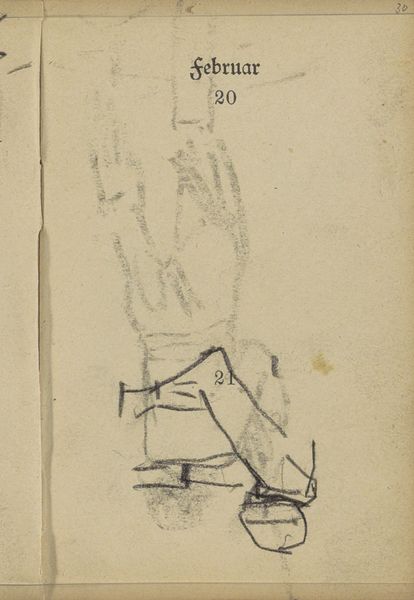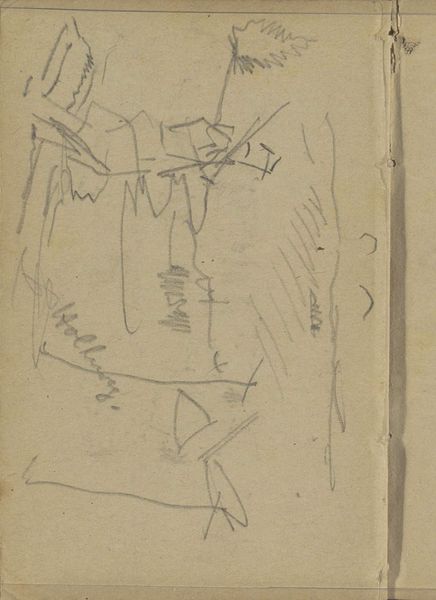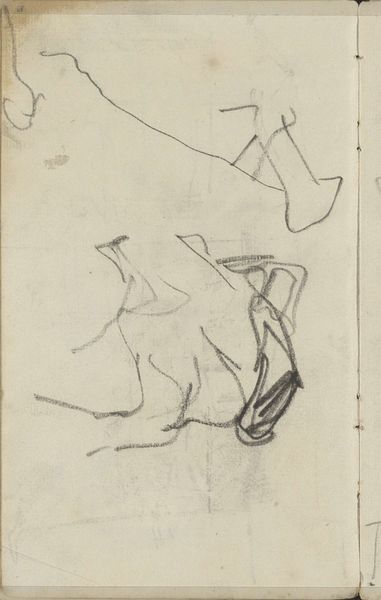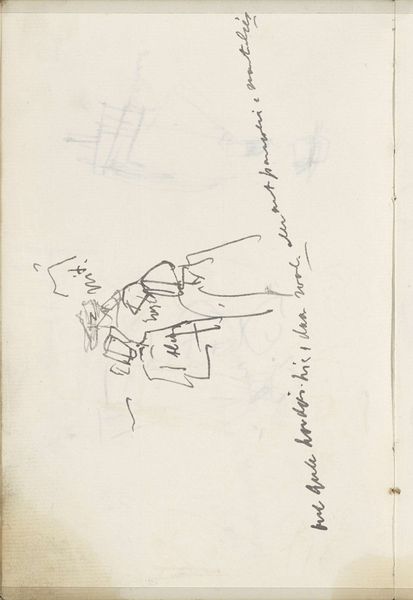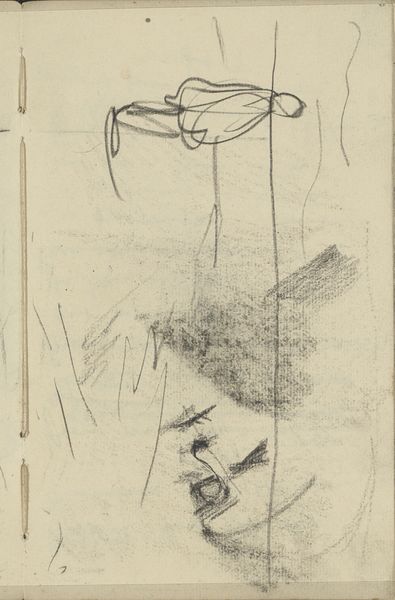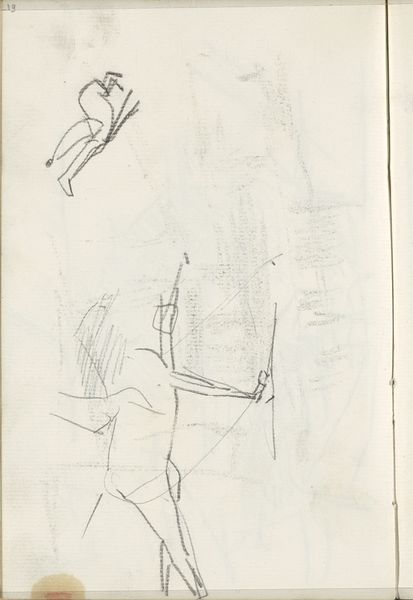
drawing, pencil
#
drawing
#
dutch-golden-age
#
pen sketch
#
figuration
#
pencil
#
realism
Copyright: Rijks Museum: Open Domain
Curator: This is George Hendrik Breitner's "Vrouw op een ezel en een vrouw op een kameel," dating from around 1895 to 1898. It’s currently held here at the Rijksmuseum. Editor: My first thought is how stark it is! Just raw lines scratched onto paper. There's something very immediate and unpolished about the composition, capturing pure motion. Curator: Indeed. Breitner was keenly interested in depicting the hustle and bustle of city life and you see that reflected in the dynamism of his drawings. It appears he created this study during travels to Northern Africa, which had a tangible effect on Dutch Orientalism at the time. Editor: Look at the textures suggested by such simple marks. The bundled lines implying drapery on the camel-rider's form is quite sophisticated, really giving a sense of weight and flow with so little information. Curator: His loose, gestural style, influenced by Japanese prints which were growing in popularity then, was considered quite modern for his time. Although he primarily became known as a painter, Breitner was constantly drawing. He would sketch ideas quickly in small notebooks and come back to them in the studio. This would also have coincided with growing access for camera technology, leading artists like Breitner to ask fundamental questions about seeing and perception. Editor: I appreciate how unfinished it feels, you know? It shows the working process so plainly. Also, what a curious pairing—an image of one woman on a donkey and another on a camel, rendered with equal attention. What ties the images together visually or narratively is fascinating. Curator: That interplay between the two scenes speaks to his engagement with capturing everyday observations and allowing these vignettes to sit side-by-side. His dedication to depicting movement in city life provides some context, and perhaps we are invited to observe those intersections across borders. Editor: For me, it’s a peek behind the curtain, into Breitner's mind as he wrestles with form and movement. The raw expressiveness is undeniably compelling. Curator: Absolutely, it offers a rare insight into the artist's methods and thinking about representation at a key point in the history of imagery and mass communications.
Comments
No comments
Be the first to comment and join the conversation on the ultimate creative platform.
